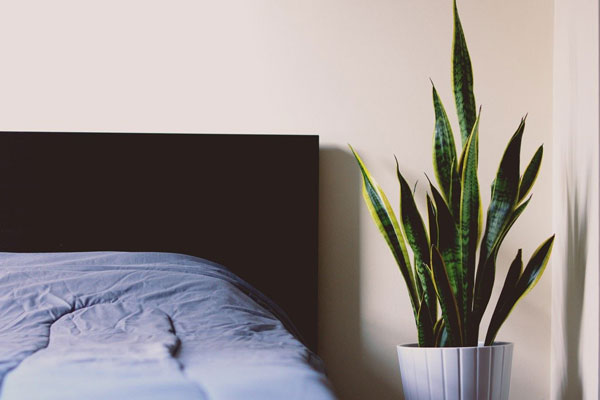Plants and humans have lived in partnership since the beginning of human experience, not only in terms of food and medicine but as a fundamental part of our spiritual experience and developing consciousness.
Shamanic cultures worldwide see everything around them as alive, aware, and related. From a shamanic perspective nature is a complex web of support in which each part effectively cares for another; the nature of nature is co-operation. Nature has not accidentally created the plants around us to be as they are. They all serve a purpose.
Every single day in modern culture we are exposed to indoor air pollutants which have been ranked among the top five environmental risks to our health. In fact, modern furnishings, synthetic building materials, and even your flooring or carpet may carry more toxic chemicals than expected including formaldehyde. These chemicals can make up to 90 percent of indoor air pollution, so your home or work space can contain stagnant pollutants which can build up to greater amounts than we humans should be breathing in.
In extreme cases this can cause headaches, dizziness, nausea, eye, ear, and often nose irritation.
Increasing air flow and working with the natural healing properties of particular houseplants in your indoor space can dramatically reduce and even neutralise the air pollutants you are exposed to, improving your home or working space.
So how do houseplants and Shamanics work together to heal our indoor environment?
In Shamanics when we use a plant for healing, we know we are calling upon a spirit being – an ‘other’ intelligence that knows exactly what is needed to aid the healing process of our environment.

Whilst there are several houseplants which can absorb harmful toxins from the air, it can be useful to undertake a Shamanic Journey with the spirit of the plant to understand its deeper meanings for us and come in to a relationship with it this can support us in choosing plants that can be beneficial for our environment.
So, how do houseplants clean the air?
Plants absorb some of the particulates from the air at the same time that they take in carbon dioxide, which is then processed into oxygen through photosynthesis. Microorganisms are also present in the soil in which the plant is potted and these also contribute greatly to the cleaning effectiveness of each plant.
So what can you do?
Almost all of the plants I’ve listed below are really easy to care for and really happy to be left for long lengths of time without care, whilst still doing naturally the process that is beneficial to you. Undertaking a Shamanic journey with the spirits of the plants can support us in choosing plants that can be beneficial for our environment.
1. Spider Plant (Chlorophytum Comosum “Vittantum”)
I have these everywhere in my home, and they all produce flowers on a regular basis which turn into ‘spiderettes’ or baby spider plants, and provide me with even more. I regular donate these to friends!
Now even if you tend to neglect houseplants this resilient plant just keeps going, coming back from almost dead with a tiny amount of sporadic water.
It loves indirect sunlight and bright locations and rewards you with lots of rich foliage and tiny white flowers, the spider plant combats benzene, formaldehyde, carbon monoxide and xylene, a solvent used in the leather, rubber and printing industries.
Plant care: Water your spider plants once a week but if you forget don’t worry, it will always survive.
Non-toxic: For children or animals who like to play with swinging things, this plant is safe.
Pollutants removed: benzene, formaldehyde, carbon monoxide and xylene
2. Dracaena (Dracana spp.)
Bright and radiant, the Dracaena will go to work purifying the air in your home or work space as soon as it is brought into the room. There are more than 40 different kinds of Dracaena plants. A common foliage plant with long, wide leaves that are often variegated with lines of white, cream, or red.
Plant care: Keep the soil damp but not soggy, as too much water is a kiss of death for this plant. Perfect if you need to abandon them for a while.
Toxic to animals: Your cat or dog may vomit, salivate more, or have dilated pupils if they eat dracaenas.
Pollutants removed: benzene, formaldehyde, trichloroethylene, and xylene
3. Weeping Fig (Ficus bejamina)
A ficus in your sitting room can help filter out pollutants that normally accompany flooring and furniture such as formaldehyde, benzene and trichloroethylene. Looks its best when grown in bright, indirect light and doesn’t do well in light fluctuations or dramatic changes in temperature.
In southeast Asia this is an outdoor tree but indoors it ends up being between two and 10 feet tall. Allow the soil to dry out between waterings.
Pollutants removed: benzene, formaldehyde, and trichloroethylene
4. Peace Lily (Spathiphyllum sp.)
Peace lily plants are relatively small compared to many of the plants on this list, but they still pack some major air-cleaning abilities.
Plant care: Easy to grow, needing modest sunlight and plenty of water to keep it happy. Too little light and it won’t flower.
Toxic to animals and humans: Despite its calming name, this beautiful plant is toxic to cats, dogs, and children. Can cause burning, swelling, and skin irritation in adults.
Pollutants removed: ammonia, benzene, formaldehyde, and trichloroethylene
5. Mother-in-Laws Tongue (Sansevieria trifasciata)
This plant is almost impossible to kill and one of the best for filtering out formaldehyde, which is common in cleaning products, toilet paper, tissues and personal care products.
Plant care: it does need to be watered occasionally, but generally prefers drier conditions and low light.
Pollutants removed: benzene, formaldehyde, trichloroethylene, and xylene

6. Aloe Vera (Aloe vera or A. barbadensis)
People have been using aloe vera for more than 6,000 years when it was known as “the plant of immortality” in early Egypt. This easy-to-grow, sun-loving succulent helps clear formaldehyde, which can be a byproduct of chemical-based cleaners, paints and more
The plant’s leaves contain a clear liquid full of vitamins, enzymes, amino acids, and other compounds that have wound-healing, antibacterial, and anti-inflammatory properties. Aloe vera is typically used topically for sunburns, burns, abrasions and other skin conditions.
Pollutant removed: formaldehyde and benzene


